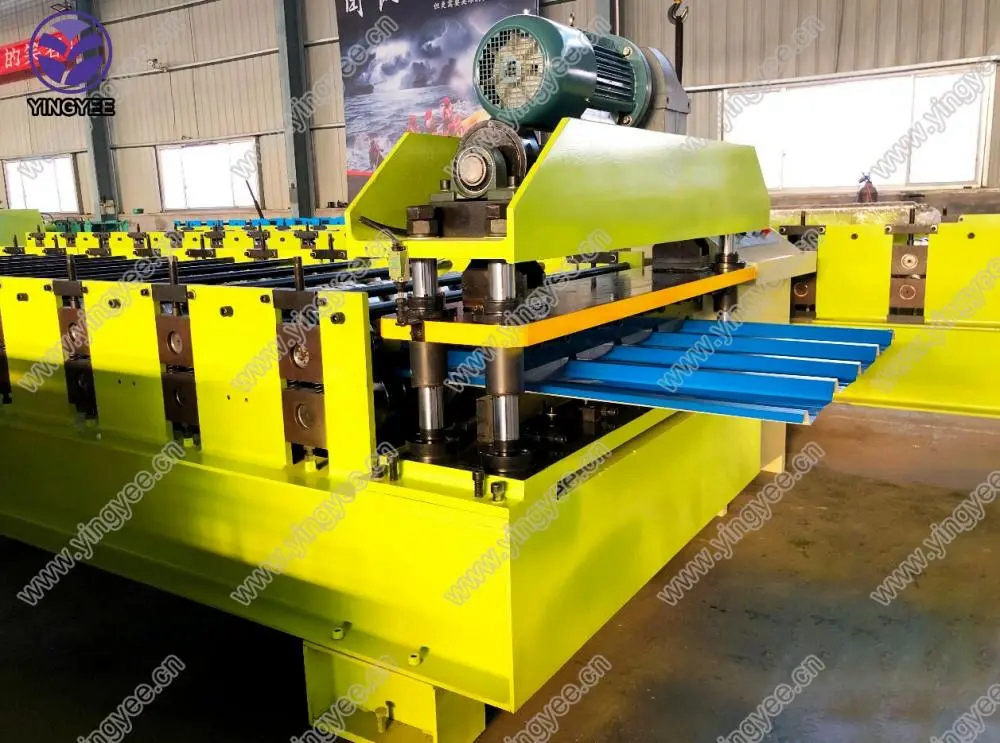
Guardrail Block Spacer Cold Bending Machine An Essential Tool in Modern Road Safety
In the realm of road safety and infrastructure development, the guardrail plays a pivotal role in protecting vehicles and pedestrians from potential accidents. As road designs evolve and traffic increases, the need for efficient, cost-effective, and durable guardrail systems has become paramount. One of the most innovative solutions that has emerged in this field is the guardrail block spacer cold bending machine. This machine not only streamlines the manufacturing of guardrail components but also enhances overall safety standards.
Understanding the Guardrail System
Guardrails are installed along highways and roadsides to serve as barriers that prevent vehicles from veering off the road. They are typically made from steel and designed to absorb impact energy, thereby reducing the severity of accidents. A crucial element in the guardrail structure is the block spacer, which maintains appropriate spacing between guardrail posts and ensures the stability of the overall system.
With traffic volumes rising, the demand for custom and robust guardrails has surged, which has led to advancements in manufacturing technologies. One of these advancements is the cold bending process utilized by specialized machines to produce guardrail components, such as block spacers.
The Role of the Cold Bending Machine
The guardrail block spacer cold bending machine is designed to shape metal profiles into the required geometries without the need for heating. This cold bending process offers several advantages over traditional methods
1. Precision and Accuracy Cold bending machines use advanced technologies, including CNC (Computer Numerical Control) systems, which allow for high precision in production. This level of accuracy is crucial for ensuring that guardrail components fit together seamlessly and perform their intended safety functions.

2. Material Efficiency By using cold bending techniques, there is minimal waste of materials. The machine utilizes raw metal sheets or coils, transforming them into required forms with minimal leftover scrap. This improves cost-effectiveness and reduces the environmental impact of manufacturing.
3. Versatility The cold bending machine can handle a variety of metal types and thicknesses, allowing manufacturers to customize guardrail components to meet specific project requirements. This adaptability is essential in accommodating different road designs and conditions.
4. Strength and Durability The cold bending process strengthens the metal by aligning its crystalline structure, resulting in components that are not only shaped accurately but are also more resistant to impact, rust, and wear over time. This durability is key in prolonging the lifespan of guardrail systems, ensuring long-term protection for road users.
Improved Safety Standards
By investing in guardrail block spacer cold bending machines, manufacturers can produce higher-quality components that contribute to improved safety standards on roads. The enhanced properties of cold-bent metal ensure that guardrails perform their protective function effectively, reducing the likelihood of injury or fatalities in the event of an accident.
Furthermore, efficient manufacturing processes mean that these components can be produced and installed more rapidly, allowing for timely upgrades or installations of guardrail systems as urban areas expand or traffic patterns shift.
Conclusion
The guardrail block spacer cold bending machine represents a significant advancement in road safety technology. By enhancing the efficiency of guardrail component production and improving the quality and durability of the final products, this machine plays a crucial role in the ongoing efforts to create safer road environments across the globe. For manufacturers, road authorities, and ultimately the drivers and pedestrians who rely on these safety systems daily, embracing this technology is not just a step towards modernization; it is a commitment to safeguarding lives on our highways and byways.